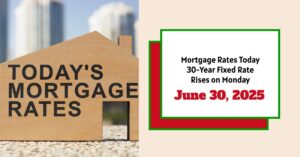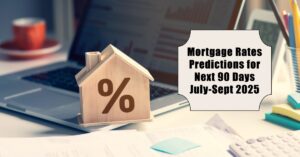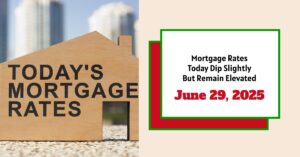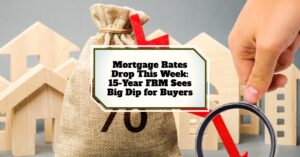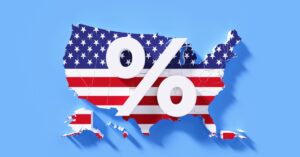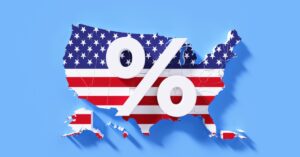Are you looking to buy a home or refinance your existing mortgage? Knowing today's mortgage rates is the first step. As of June 30, 2025, the national average for a 30-year fixed mortgage rate is 6.79%. Let's dive into a more detailed look at current mortgage rates, how they've changed, and what options are available.
Mortgage Rates Today June 30, 2025: 30-Year Fixed Rate Rises on Monday
Key Takeaways
- 30-Year Fixed Mortgage Rate: The average 30-year fixed mortgage rate is 6.79%.
- Refinance Rates Increased: The national average for a 30-year fixed refinance rate is 7.04%.
- Government Loans Mixed: FHA rates increased, while VA rates showed slight increases.
- Jumbo Loans Varied: Jumbo loan rates experienced a mix of increases and decreases across different terms.
Breaking Down Today's Mortgage Rates
Understanding mortgage rates can feel like trying to decipher a secret code. But don't worry, it's not as complicated as it seems. Mortgage rates represent the cost you pay to borrow money to buy a home, and they're influenced by many factors, including the economy, inflation, and even global events. Let's explore the mortgage rates today and how they compare to last week;
According to Zillow, as of June 30, 2025, here's a snapshot of the current mortgage rates for various loan types:
Conforming Loans
Conforming loans meet specific standards set by Fannie Mae and Freddie Mac, making them more accessible for many borrowers.
| PROGRAM | RATE | 1W CHANGE | APR | 1W CHANGE |
|---|---|---|---|---|
| 30-Year Fixed Rate | 6.79% | 0.00% | 7.20% | down 0.04% |
| 20-Year Fixed Rate | 6.05% | down 0.21% | 6.31% | down 0.32% |
| 15-Year Fixed Rate | 5.76% | down 0.05% | 6.03% | down 0.08% |
| 10-Year Fixed Rate | 5.78% | up 0.09% | 6.04% | up 0.04% |
| 7-year ARM | 7.00% | down 0.14% | 7.91% | up 0.09% |
| 5-year ARM | 7.59% | up 0.13% | 7.92% | 0.00% |
| 3-year ARM | – | 0.00% | – | 0.00% |
As you can see, the 30-year fixed mortgage rate remains unchanged at 6.79%. But other conforming loans saw both increases and decreases. For instance, the 20-year fixed rate dropped by 0.21%, while the 10-year fixed rate rose by 0.09%. This demonstrates that different loan terms can react uniquely to market conditions.
Government Loans
Government-backed loans, like FHA and VA loans, offer different terms and requirements, often making them appealing to first-time homebuyers or veterans.
| PROGRAM | RATE | 1W CHANGE | APR | 1W CHANGE |
|---|---|---|---|---|
| 30-Year Fixed Rate FHA | 7.75% | up 0.51% | 8.79% | up 0.51% |
| 30-Year Fixed Rate VA | 6.35% | up 0.08% | 6.57% | up 0.09% |
| 15-Year Fixed Rate FHA | 5.56% | down 0.71% | 6.53% | down 0.71% |
| 15-Year Fixed Rate VA | 5.70% | down 0.08% | 6.06% | down 0.06% |
Looking at government loans, we see the 30-year fixed rate FHA increased. VA loans saw minor increases, while the 15-year fixed rate for FHA loans saw a significant decrease of 0.71%. These fluctuations highlight the specific dynamics within government-backed lending.
Jumbo Loans
Jumbo loans apply to mortgages that exceed the conforming loan limits set by government-sponsored enterprises Fannie Mae and Freddie Mac.
| PROGRAM | RATE | 1W CHANGE | APR | 1W CHANGE |
|---|---|---|---|---|
| 30-Year Fixed Rate Jumbo | 7.03% | down 0.12% | 7.58% | up 0.02% |
| 15-Year Fixed Rate Jumbo | 6.27% | down 0.28% | 6.64% | down 0.17% |
| 7-year ARM Jumbo | 7.42% | 0.00% | 8.00% | 0.00% |
| 5-year ARM Jumbo | 6.62% | down 0.86% | 7.56% | down 0.38% |
| 3-year ARM Jumbo | – | 0.00% | – | 0.00% |
If you're in the market for a jumbo loan, the 30-year fixed rate is at 7.03%, which decreased by 0.12% compared to last week. The 5-year ARM Jumbo saw the most significant decrease, dropping by 0.86%. These changes provide insights for those seeking larger loan amounts.
Today's Refinance Rates: A Closer Look
Refinancing means replacing your current mortgage with a new one, ideally with better terms. Let's examine today's refinance rates to see if it's a viable option for you.
Here's the latest on refinance rates:
- 30-Year Fixed Refinance Rate: 7.04% (up 0.01% from the previous day)
- The 30-year fixed refinance rate on June 30, 2025, is down 2 basis points from the previous week’s average rate of 7.06%.
- 15-Year Fixed Refinance Rate: 5.86% (up 0.04% from the previous day)
- 5-Year ARM Refinance Rate: 7.85% (up 0.06% from the previous day)
Conforming Loans
| PROGRAM | RATE | 1W CHANGE | APR | 1W CHANGE |
|---|---|---|---|---|
| 30-Year Fixed Rate | 6.79% | 0.00% | 7.20% | down 0.04% |
| 20-Year Fixed Rate | 6.05% | down 0.21% | 6.31% | down 0.32% |
| 15-Year Fixed Rate | 5.76% | down 0.05% | 6.03% | down 0.08% |
| 10-Year Fixed Rate | 5.78% | up 0.09% | 6.04% | up 0.04% |
| 7-year ARM | 7.00% | down 0.14% | 7.91% | up 0.09% |
| 5-year ARM | 7.59% | up 0.13% | 7.92% | 0.00% |
| 3-year ARM | – | 0.00% | – | 0.00% |
As the rates show, refinancing can be a strategic move if you find a rate lower than your current one.
Related Topics:
Mortgage Rates Trends as of June 29, 2025
Mortgage Rate Predictions for the Next 3 Years: 2026, 2027, 2028
FRM (Fixed-Rate Mortgage) vs Adjustable-Rate Mortgage (ARM): Which to Choose?
When choosing a mortgage, one of the most important decisions is whether to opt for a fixed-rate mortgage (FRM) or an adjustable-rate mortgage (ARM). Each has its own set of advantages and disadvantages, depending on your financial situation and risk tolerance.
- Fixed-Rate Mortgage (FRM): With a fixed-rate mortgage, the interest rate remains the same throughout the life of the loan, typically 15, 20, or 30 years.
- Pros: Predictable monthly payments, protection against rising interest rates, and easier budgeting.
- Cons: Higher initial interest rates compared to ARMs, and you might miss out on potential savings if the interest rates go down.
- Adjustable-Rate Mortgage (ARM): An adjustable-rate mortgage has an interest rate that can change periodically based on market conditions. Typically, ARMs have an initial fixed-rate period, after which the rate adjusts.
- Pros: Lower initial interest rates, potential for lower payments if interest rates decrease, and can be beneficial for those planning to move or refinance in a few years.
- Cons: Unpredictable monthly payments, risk of higher payments if interest rates increase, and can be complex to understand.
Let's illustrate with an example. Suppose you're considering a $300,000 mortgage. If you choose a 30-year FRM at 6.79%, your monthly payment for principal and interest would be around $1,954. But, if you opt for a 5-year ARM starting at 5.79%, your initial payment may be lower, but it could increase after the fixed-rate period ends.
Choosing between an FRM and an ARM is a personal decision. Before making the leap, make sure you understand the ins and outs of each; the risk involved and talk to a financial advisor.
Mortgage Rates in 2025: What to Expect
Predicting the future of mortgage rates is never a certainty, but here's the current outlook for 2025:
- Goodbye Ultra-Low Rates: Don't anticipate a return to the historically low mortgage rates (2-3%) seen during the pandemic era.
- “Higher-for-Longer” Scenario: Experts largely agree that interest rates will remain elevated for an extended period.
- Gradual Rate Adjustments: While the Federal Reserve may implement interest rate cuts, these are projected to be gradual and measured.
- Fed's Influence: Mortgage rates typically follow the Federal Reserve's lead. Therefore, any rate cuts by the Fed are likely to result in a subsequent decrease in mortgage rates.
- Bond Market Impact: The yield on 10-year Treasury bonds significantly affects mortgage rates; the slight upward trend that these bonds currently show may impact said rates.
The Bottom Line: There is a possibility of slight mortgage rate decreases in 2025. However, this is contingent on economic conditions, Federal Reserve policy, and global economic factors. Vigilance and awareness of market dynamics are paramount.
Frequently Asked Questions (FAQs)
What factors influence mortgage rates?
Mortgage rates are influenced by economic indicators like inflation, employment rates, and the Federal Reserve's monetary policy. Global events and investor confidence also play a role.
How do I get the best mortgage rate?
Improve your credit score, save for a larger down payment, compare offers from multiple lenders, and consider different loan types.
What is APR?
APR (Annual Percentage Rate) measures the total cost of your loan annually, including the interest rate, fees, and other charges. It gives a more complete picture of the loan's true cost.
Should I choose a fixed-rate or adjustable-rate mortgage?
It depends on your risk tolerance, financial situation, and how long you plan to stay in the home. Fixed-rate mortgages offer stability, while adjustable-rate mortgages may start lower but can fluctuate.
Invest Smarter in a High-Rate Environment
With mortgage rates remaining elevated this year, it's more important than ever to focus on cash-flowing investment properties in strong rental markets.
Norada helps investors like you identify turnkey real estate deals that deliver predictable returns—even when borrowing costs are high.
HOT NEW LISTINGS JUST ADDED!
Connect with a Norada investment counselor today (No Obligation):
(800) 611-3060
Also Read:
- Will Mortgage Rates Go Down in 2025: Morgan Stanley's Forecast
- Expect High Mortgage Rates Until 2026: Fannie Mae's 2-Year Forecast
- Mortgage Rate Predictions 2025 from 4 Leading Housing Experts
- Mortgage Rates Forecast for the Next 3 Years: 2025 to 2027
- 30-Year Mortgage Rate Forecast for the Next 5 Years
- 15-Year Mortgage Rate Forecast for the Next 5 Years
- Why Are Mortgage Rates Going Up in 2025: Will Rates Drop?
- Why Are Mortgage Rates So High and Predictions for 2025
- Will Mortgage Rates Ever Be 3% Again in the Future?
- Mortgage Rates Predictions for Next 2 Years
- Mortgage Rate Predictions for Next 5 Years
- Mortgage Rate Predictions: Why 2% and 3% Rates are Out of Reach
- How Lower Mortgage Rates Can Save You Thousands?
- How to Get a Low Mortgage Interest Rate?
- Will Mortgage Rates Ever Be 4% Again?
